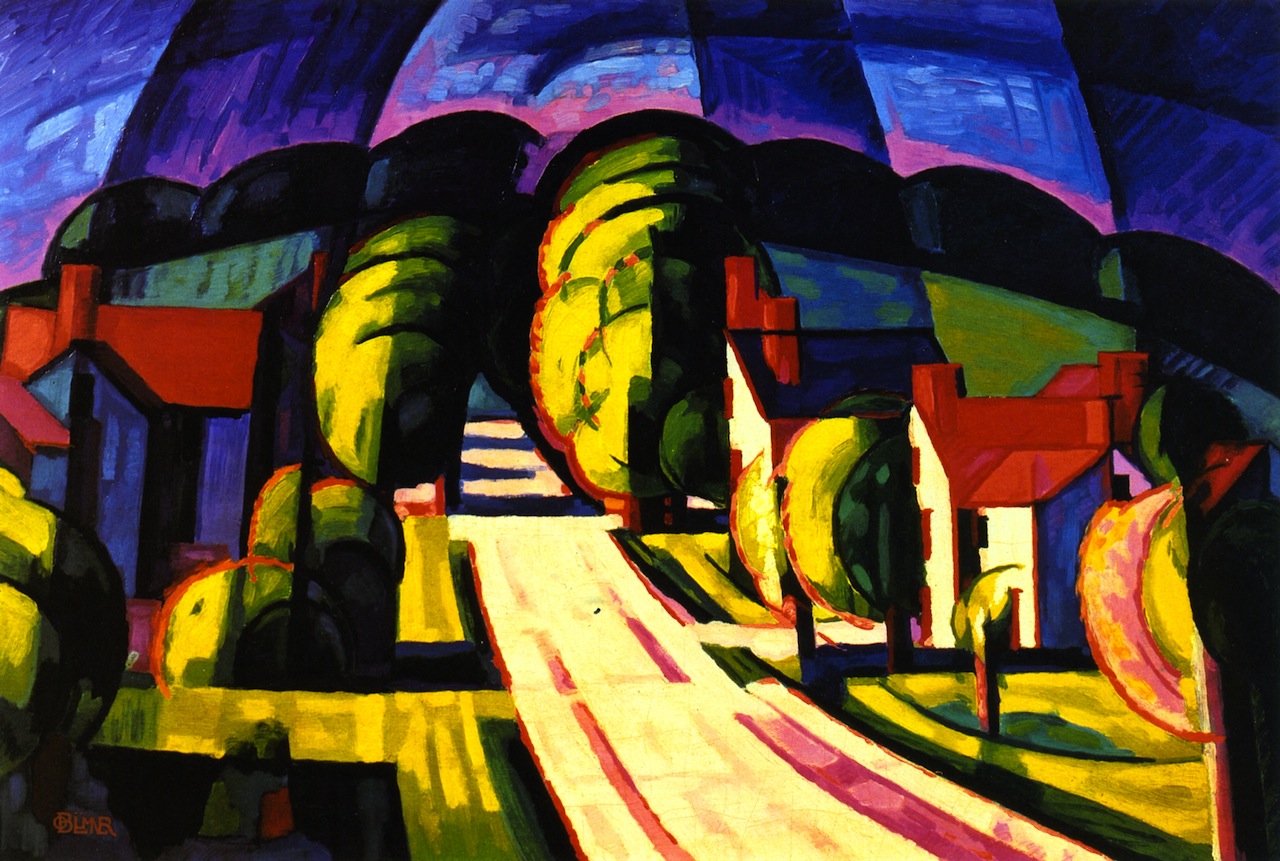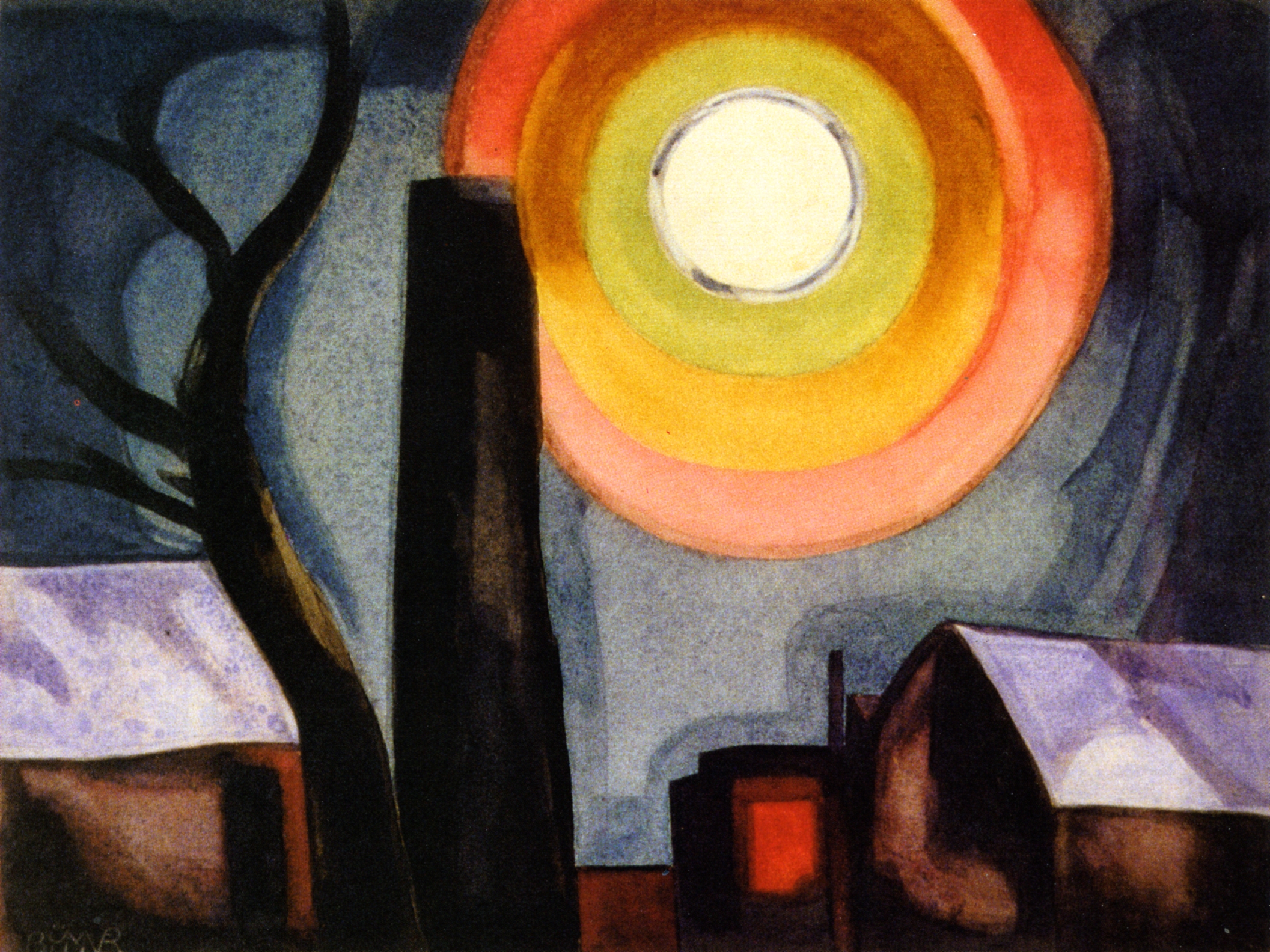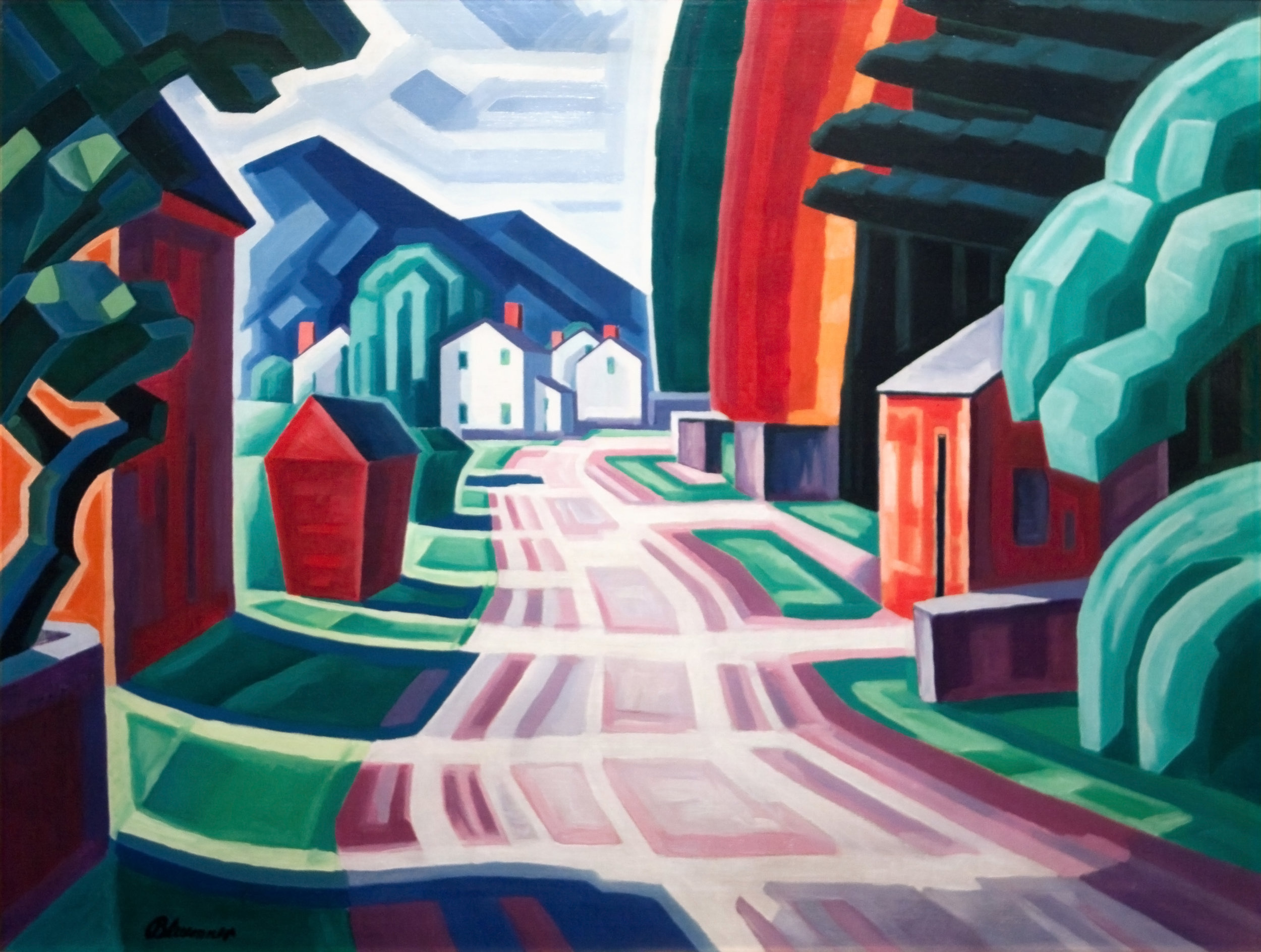Oscar Bluemner • American (1867-1938)
The Poor Farm C: 1924 • Watercolor on Paper 9 1/2" x 12 1/2"
By all accounts, Oscar Bluemner was a difficult man to deal with. He was talented, educated, self-aggrandizing, and so stubborn that this penniless artist once brought down a political machine in the Bronx, New York. Think of what he would have accomplished if he had money.
Bluemner was a brilliant architecture and painting student in Berlin before deciding to share his talents with America, moving here in 1892. though never fully employed, he managed to work on the design for New York’s Bronx Borough Courthouse in 1904. Unfortunately, Building Inspector Michael J. Garvin, took full credit. Bluemner’s subsequent lawsuit exposed Garvin as a political hack and brought down Borough President, Louis Haffen. Bluemner never recovered his full fee, and, he soon turned to painting. This sharp career change improved the fortunes of modern art dealers more than it did for poor Oscar Bluemner.
(story continues below break)
INTERESTING STORIES FROM OUR SPONSORS

Bluemner loved pure color believing it carried an emotional and psychological impact. The Poor House is an excellent example of how he used primary colors to simplify an image, rather than make it more abstract. It is interesting that Bluemner’s Poor Farm is an inviting red building framed by a harsh dead tree and night sky. Most paintings of similar subjects portray them in cold, less vibrant colors. He once said, “I paint my attitude, I would be a composer, but being all retina, I see everything as color.”
Lynnda Arrasmith, Curator of Collections at the Canton Museum of Art, noted that Bluemner’s paintings are often very small, with The Poor Farm being on the large side for his work.
Although Bluemner’s early modern works were well received, his difficult personality eventually pushed him out of the art mainstream. He staggered through a poverty-stricken life, always feeling unappreciated and depressed by his lack of acclaim. In 1938 he committed suicide. By the late 20th Century Bluemner was acknowledged as a key player in the American modern art movement. His 1915 painting, Illusion of a Praire, New Jersey (Red Farm at Pochuck) sold for $5,346,500. Oscar Bluemner may have been right, but his timing was off by about 80 years.
Canton Museum of Art Permanent Collection • From the James C. & Barbara J. Koppe Collection, 997.2
4 Ways to Sound Smart When Viewing at The Canton Museum of Art
1.
“Because of his training in architecture, many of Bluemner’s paintings render buildings with an almost draftsmanlike quality.”
2.
“A German immigrant with a self-aggrandizing streak, Bluemner once brought down a major New York politician who tried to cheat him out of an architectural commission.”
3.
“Although highly acclaimed during his early painting career, Bluemner never found financial success during his lifetime. Now his paintings sell for millions.”
4.
“He is now viewed as a major modernist painter, but his personality was so distasteful he received little recognition during his lifetime.”
Bluemner Timeline. Scroll over images to see timeline.





















